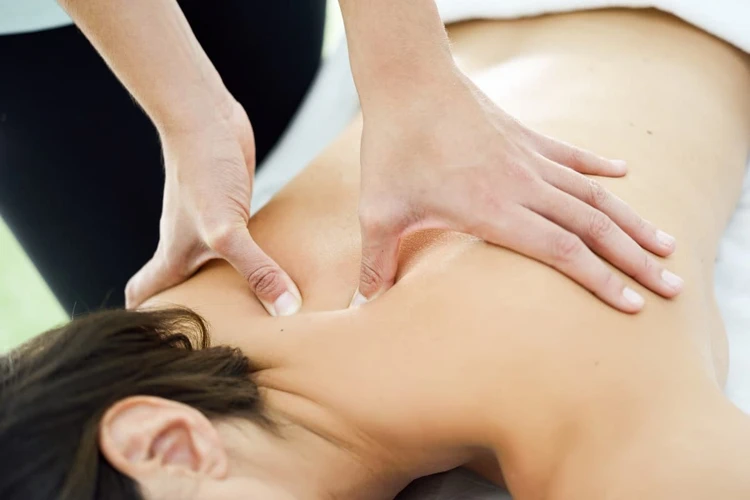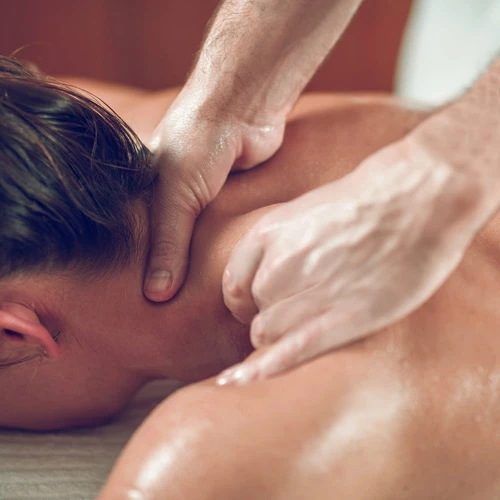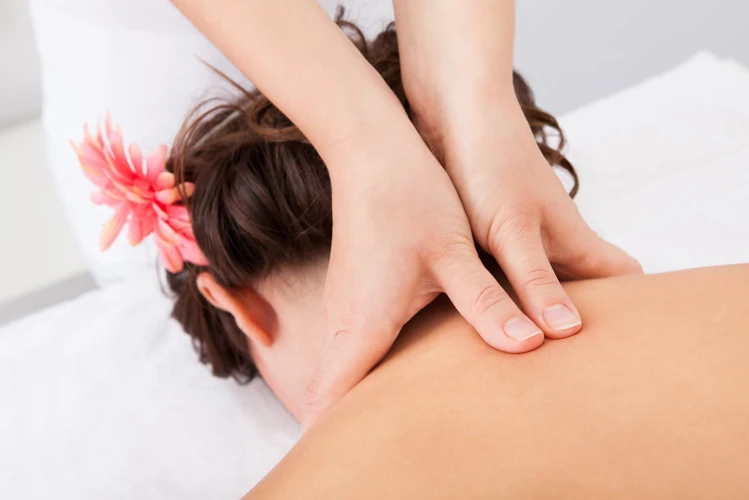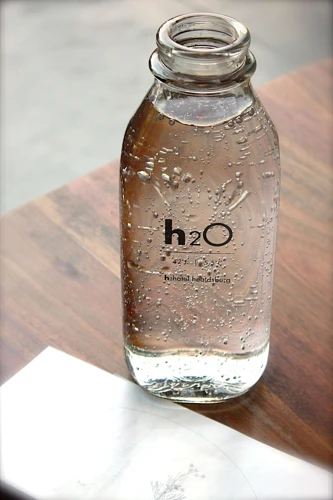When it comes to relaxation and stress relief, a massage is a great way to go. However, it is important to understand what toxins are released after massage, as they can have an effect on your overall health. In this article, we will discuss the toxins that you need to be aware of after a massage, and how to protect yourself from them.
Contents
What are Toxins?

Toxins are substances that are harmful to the body and can be found in the environment, food, and water. These can include heavy metals, pesticides, and other environmental pollutants. They can also be produced by the body as a result of metabolic processes or from external sources, such as medications. Toxins can cause a variety of health issues, including fatigue, headaches, and a weakened immune system.
How does massage release toxins?
Massage helps to stimulate the lymphatic system, which is responsible for removing toxins from the body. During a massage, the pressure and movement of the massage therapist’s hands help to break up and flush out the toxins that have been stored in the muscles, tissues, and lymph nodes. This helps to detoxify the body and can reduce the effects of toxins that have built up over time.
What Toxins are Released After a Massage?

Many people are unaware that when you get a massage does it release toxins from your body. When your body is massaged, it helps to break down fatty deposits, reduce inflammation, and release metabolic waste and toxins. The release of these toxins can be beneficial as it helps to reduce pain and improve circulation.
The most common toxins released after a massage are lactic acid, uric acid, and carbon dioxide. Lactic acid is produced by the muscles during exercise and is released during a massage. Uric acid is a waste product that is found in the blood and is released into the lymphatic system and then excreted. Carbon dioxide is a waste product that is released when the body uses energy.
| Toxin | Description |
|---|---|
| Lactic Acid | Produced by the muscles during exercise |
| Uric Acid | Waste product found in the blood |
| Carbon Dioxide | Waste product released when the body uses energy |
The release of these toxins can be beneficial as it helps to reduce pain, improve circulation, and reduce inflammation. In addition to these toxins, massage can also help to reduce stress hormones, improve digestion, and reduce the risk of disease.
How Does Massage Release Toxins?

Massage helps release toxins from the body by stimulating the circulatory and lymphatic systems. This encourages the elimination of metabolic waste and other toxins that have built up in body tissues. During massage, the muscles are manipulated, which helps to break up the toxins that have accumulated in the body. This process helps to move the toxins from the tissues into the lymphatic system, where they can be flushed out of the body. Additionally, massage promotes circulation, which helps to further flush out toxins. The body also produces endorphins, which are natural pain relievers, during massage, and these can help to reduce inflammation and flush out toxins. Ultimately, massage is an effective way to help the body rid itself of harmful toxins that can build up over time.
When You Get a Massage, Does it Release Toxins?

Massage therapy can be a great way to reduce stress and relax your body, but many people wonder if it can also help to release toxins from their muscles. The answer is yes – massage can indeed help to flush out toxins from your body. Here are some of the toxins that your muscles can release after a massage:
- Lactic acid: Lactic acid is a by-product of muscle metabolism and is released during strenuous exercise. During a massage, the pressure from the massage therapist’s hands can help to break down the lactic acid and flush it out of the body.
- Urea: Urea is a waste product that is produced by the liver and excreted through the urine. During a massage, the pressure can help to break down the urea, allowing it to be flushed out of the body.
- Toxins from the environment: Pollutants and toxins in the air can be absorbed by the body and stored in the muscles. During a massage, the pressure can help to release these toxins, allowing them to be flushed out of the body.
- Metabolic waste: Metabolic waste is produced by the body’s cells as a by-product of metabolism. During a massage, the pressure from the massage therapist’s hands can help to break down the metabolic waste, allowing it to be flushed out of the body.
In addition to the toxins listed above, massage therapy can also help to stimulate the lymphatic system, which is responsible for filtering out toxins from the body. During a massage, the pressure from the massage therapist’s hands can help to stimulate the lymphatic system, allowing it to flush out toxins more efficiently.
Overall, massage therapy can be a great way to relax and reduce stress, but it can also help to flush out toxins from your body. So if you’re looking for a way to detoxify, massage therapy may be the perfect option.
What is Released During a Massage?

Massage therapy has been used for centuries to reduce stress, relieve tension, and improve circulation. But did you know that massage can also help to detoxify your body? During a massage, your body releases toxins that can benefit your overall health and wellbeing. Here are some of the toxins released during a massage:
- Lactic Acid: Lactic acid is a metabolic byproduct that is produced when your muscles are used for physical activity. During a massage, lactic acid is released from the muscles and flushed out of the body. This helps to reduce soreness and stiffness.
- Endorphins: Endorphins are the body’s natural painkillers. Massage helps to release endorphins, which can provide relief from pain, reduce stress, and produce a feeling of wellbeing.
- Urea: Urea is a waste product that is produced by the kidneys. During a massage, urea is released from the muscles, helping to detoxify your body and flush out impurities.
- Oxygen: Oxygen is essential for cellular metabolism and is released during a massage. This helps to improve the flow of oxygen in the body and can help to reduce fatigue.
- Carbon Dioxide: Carbon dioxide is a waste product from metabolism. During a massage, carbon dioxide is released from the body, helping to reduce fatigue and improve circulation.
By releasing these toxins during a massage, you can help to detoxify your body and improve your overall health and wellbeing.
What Do Your Muscles Release After a Massage?

A massage can be an incredibly beneficial experience for your muscles. While you are getting a massage, your muscles are being loosened and the tension is being released. This can lead to a number of positive effects such as improved circulation, increased flexibility, and decreased pain. As the massage progresses, your muscles are also releasing toxins.
Lactic Acid
Lactic acid is a by-product of exercise and is released by your muscles as a result of physical activity. During a massage, your muscles are stimulated and the lactic acid that has built up in them is released. This can lead to decreased inflammation and improved circulation.
Urea
Urea is a metabolic waste product that is produced when proteins are broken down in the body. During a massage, the muscles are manipulated and urea is released. Urea is then removed from the body in the form of sweat and urine.
Uric Acid
Uric acid is another metabolic waste product that is produced when proteins are broken down in the body. Like urea, uric acid is released during a massage and then removed from the body through urine and sweat.
Creatine
Creatine is a naturally occurring substance found in the body. It helps to produce energy and is released during a massage. This can help to improve muscle strength and endurance.
Hormones
Hormones are chemical messengers that are released by the body. During a massage, hormones such as serotonin, endorphins, and oxytocin are released. These hormones can help to reduce stress, improve mood, and boost the immune system.
Other Toxins
In addition to the toxins mentioned above, your muscles can also release other toxins such as heavy metals, environmental pollutants, and drug metabolites. These toxins can be present in the body as a result of environmental exposure or drug use and can be released during a massage.
| Toxin | Description |
|---|---|
| Lactic Acid | By-product of exercise |
| Urea | Metabolic waste product |
| Uric Acid | Metabolic waste product |
| Creatine | Naturally occurring substance |
| Hormones | Chemical messengers |
| Other Toxins | Heavy metals, environmental pollutants, drug metabolites |
It is important to note that while these toxins are being released, they are not necessarily harmful to your body. However, if you are exposed to high levels of these toxins on a regular basis, it may be beneficial to seek the advice of a healthcare professional.
How Can You Reduce Toxin Release After a Massage?

Drink Plenty of Water: Drinking plenty of water helps flush out toxins from the body. It is important to drink at least 8 glasses of water after a massage, as it helps eliminate the toxins that are released during the massage.
Take a Warm Bath: Taking a warm bath after a massage helps to relax the body and flush out the toxins that may have been released. Adding Epsom salts to the bath helps to draw out the toxins.
Avoid Alcohol: Avoiding alcohol after a massage helps to reduce the amount of toxins that are released in the body. Alcohol is known to increase the release of toxins in the body, so it should be avoided after a massage.
Eat Healthy Foods: Eating healthy foods helps to reduce the amount of toxins that are released in the body. Eating a balanced diet that is rich in fresh fruits and vegetables helps to nourish the body and provide essential nutrients that help to reduce the release of toxins.
Use Detoxifying Products: Using detoxifying products such as clay masks and special herbs can help to reduce the amount of toxins that are released in the body. These products help to draw out the toxins from the body and help to reduce the release of toxins.
What Are the Benefits of Massage?
Massage is a great way to relax and de-stress, as well as to relieve muscle tension and pain. It has numerous physical, psychological and emotional benefits. Massage can increase blood circulation, reduce inflammation and improve range of motion. It can also reduce stress, anxiety and depression, improve sleep, and boost the immune system. The relaxation that massage provides can also help reduce tension headaches, fatigue and even promote weight loss.
Massage can also help release toxins from the body. During massage, the body releases endorphins, a natural painkiller, as well as other hormones that help reduce stress. This can help to boost the immune system and leave you feeling relaxed and refreshed. In addition, massage can help to break up and flush out toxins, such as lactic acid, which build up in the muscles.
With a variety of massage techniques available, you can tailor your massage session to focus on specific areas of your body. Whether you’re seeking relief from muscle discomfort or looking to relax and de-stress, massage can provide a multitude of benefits.
Frequently Asked Questions
What Kind of Toxins Can Be Released After a Massage?
Heavy Metals – These can be released due to the use of topical creams, oils, and other massage products. They can also be present in the air around the massage parlor or in the massage table itself.
Nitrogen Compounds – These can be released from the massage oils and from the massage table.
Organic Compounds – These can be released from various massage products, such as lotions and oils. They can also be present in the air around the massage parlor.
Volatile Organic Compounds (VOCs) – These are released from massage products, such as oils and lotions, and can also be present in the air around the massage parlor.
Parabens – These are found in many massage products, such as lotions and gels, and can be released into the air.
Phthalates – These are found in many massage products, such as oils and lotions, and can be released into the air.
Preservatives – These are found in many massage products, such as oils and lotions, and can be released into the air.
Fragrances – These are found in many massage products, such as oils and lotions, and can be released into the air.
What are the Health Risks Associated with Exposure to These Toxins?
Exposure to toxins can lead to a variety of health problems including respiratory illnesses, skin irritation, allergies, reproductive problems, and cancer. Long-term exposure can increase the risk of chronic diseases such as liver and kidney damage, neurological disorders, and immunological problems. Short-term exposure can cause dizziness, headaches, nausea, and vomiting. It is important to seek medical attention immediately if you experience any of these symptoms after a massage.
What Can be Done to Reduce Exposure to These Toxins?
- Choose a Massage Therapist Carefully: When selecting a massage therapist, be sure to research their credentials, ask about their massage lotion and oil product lines, and inquire about their certification.
- Inquire About Products: Ask the massage therapist about the ingredients in their massage lotion and oil products. If they cannot provide an answer, find another massage therapist who can.
- Bring Your Own Products: If you are uncertain about the products your massage therapist is using, it is best to bring your own products. This way, you are in control of what ingredients are being used.
- Be Aware of Environment: When receiving a massage, be aware of the environment. If the room is overly hot, or the air is filled with dust, it is best to move to another area or ask for the massage to be stopped.
- Stay Hydrated: Staying hydrated is key to flushing out toxins from your body. Be sure to drink plenty of water before and after the massage.
Is it Safe to Receive a Massage if I Have a Weakened Immune System?
Yes, it is safe to receive a massage if you have a weakened immune system. However, there are some precautions that you should take to ensure that you stay safe and healthy. Consider the following:
- Inform Your Massage Therapist: Let your massage therapist know if you have a weakened immune system before your session begins. This will help them to tailor the massage to your needs and take precautions to ensure your safety.
- Sanitize the Area: Make sure that the massage area is clean and sanitized before beginning your session. Ask your massage therapist to use sanitized sheets and towels for each session as well.
- Avoid Deep Tissue Massage: Avoid deep tissue massages when you have a weakened immune system. This type of massage may be too strenuous for your body to handle.
- Drink Plenty of Water: Make sure you stay hydrated throughout the massage. Drinking plenty of water will help flush out any toxins from the body.
If you follow the above precautions, you should be able to safely receive a massage even with a weakened immune system.
Are there any natural alternatives to massage that are free of toxins?
Yes, there are a few natural alternatives to massage that are free of toxins. These include:
-
Aromatherapy: Aromatherapy is the use of essential oils to help relieve stress and tension in the body. The oils can be used in a diffuser or applied topically.
Acupressure: Acupressure is an ancient Chinese therapy that involves applying pressure to specific points on the body to relieve pain and tension.
Yoga: Yoga is a form of exercise that helps to stretch and relax the muscles. It can also help improve overall wellbeing.
Meditation: Meditation is a practice that helps to relax the mind and body. It can help to reduce stress and anxiety levels.
Herbal Remedies: Herbal remedies are natural remedies that can help to reduce pain and tension in the body.
These natural alternatives to massage are free of toxins, so they are a safe and effective way to reduce stress, tension, and pain in the body.
Conclusion
Massage therapy can be beneficial for many reasons, but it is important to be aware of the potential toxins that can be present after a massage. Knowing which toxins may be present and how to reduce their levels can help ensure that the massage is both safe and effective. Taking the proper precautions and being aware of potential toxins can help ensure a safe and enjoyable massage experience.

